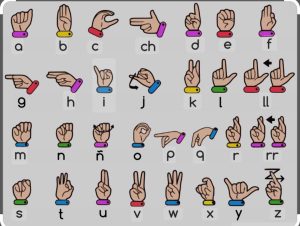By Aisha Sulaiman

After God created humans, he blessed them with a channel to express their feelings, thoughts, and ideas. And that is “language”. This feature distinguished them from other animals and creatures due to their highly developed and sophisticated brain _ an extraordinary gift from the Almighty.
In a research paper titled “An Introduction to Language”, Victoria A.Fromkin noted that language is a combination of shared signs or symbols within a society used to interact and express feelings, ideas and emotions among people.
While people dominantly communicate through word of mouth, informal communication plays a significant role in human settings.
ResearchGate, instead of words, signed language is based on concepts. It is an unwritten language made up of 26 hand symbols, each representing one alphabet. These symbols are represented by fingers, and words that are spelled. Words and names are expressed through a combination of finger spellings and also gestures.
Why Manual Communication?
Manual language, otherwise known as signed languages are fascinating examples of how interactions can take place between people beyond speech. This represents the movement of hands, body, face, gestures, and the likes to express feelings.
Apart from adding to the value of orally communicated languages for better understanding, it presents an opportunity for the less privileged persons to interact among themselves and others.
Another merit of sign language is its ability to empower someone to become a good speaker, as well as a good listener. Because it attracts more concentration toward the speakers by studying their facial expressions, hand gestures, and body movements.
Signed language is used among a variety of people; the less privileged, families of the less privileged, people with disability conditions, and also the individuals who can and can not speak fluently.
A study by Dr Marilyn Daniels, a Professor of speech communication at Penn State University shows that children who learn to use signs at a young age are smarter than those who do not. Her studies demonstrate that adding visual and kinesthetic elements to verbal communication helps enhance a preschool child’s vocabulary, spelling, and reading skills.
